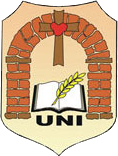Línea de investigación: Calidad en la Educación Superior
Autoras: Yohana Georgina Lombardo Sanabria – Ninfa Edith Prieto Zotelo
E-mail: lombardoyohana@gmail.com , ninfaprieto95@gmail.com
Tutor: Dr. Hermenegildo Cohene Velázquez
Fecha de Defensa: 14/10/2022
Resumen
Esta investigación buscó analizar la forma en que el uso de herramientas de aprendizaje virtual facilita el proceso de enseñanza y aprendizaje en discentes la Carrera de Bilingüismo Guaraní-Castellano de la Universidad Nacional de Itapúa (UNI), año 2020. Metodológicamente el enfoque fue cuantitativo con diseño no experimental transversal, el muestreo fue no probabilístico por conveniencia; se aplicaron cuestionarios de respuesta múltiple a 29 docentes y 67 discentes. También se procedió al análisis de contenido cuantitativo del Plan de Contingencia de la UNI (2020). Se encontró que los entornos virtuales de aprendizaje (EVA) proporcionan experiencias multimedia e hipervínculos, facilitando aprendizajes más flexibles y personalizados en la formación de los futuros licenciados en Bilingüismo. Estos EVA generan cambios pedagógicos en el rol y funciones de los discentes, desarrollan nuevas competencias desde las dimensiones ética, cultural, social, económica, científica y tecnológica. Los entornos personales de aprendizaje (PLE) son una evolución de los EVA estos facilitan que los discentes sean los constructores de su propio aprendizaje, situándose en el contexto del conectivismo. Aunque el uso de los PLE es voluntario, los procesos de enseñanza y aprendizaje tienen que proporcionar mecanismos para que estos entornos faciliten el aprendizaje autónomo y personalizado de los discentes. Por su parte, el uso del software social también facilita el proceso de enseñanza y aprendizaje, siendo estrategia de comunicación efectiva entre los discentes y docentes de la carrera de Bilingüismo.
Palabras claves: Entorno virtual de aprendizaje, entorno personal de aprendizaje, software social, proceso de enseñanza-aprendizaje, herramientas de aprendizaje virtual
Abstract
This research focused on analyzing the way in which the use of virtual learning instruments facilitates the teaching and learning process in students of the Guarani-Spanish Bilingualism Career of the National University of Itapúa (UNI), year 2020. Methodologically, the approach was quantitative with a non-experimental cross-sectional design, the sampling was non-probabilistic by convenience; multiple response surveys were applied to 29 teachers and 67 students. Quantitative content analysis was also applied to the UNI Contingency Plan (2020). It was found that virtual learning environments (VLE) provide multimedia experiences and hyperlinks, facilitating more flexible and personalized learning in the instruction of future bilingualism graduates. These VLEs generate pedagogical changes in the role and functions of the learners, develop new skills from the ethical, cultural, social, economic, scientific and technological dimensions. Personal Learning Environments (PLE) are an evolution of the VLEs, which allow students to be the builders of their own learning. These factors enable learning in the context of connectivism. Although the use of PLEs is voluntary, teaching and learning processes should provide mechanisms that facilitate the autonomous and personalized learning of students. In addition, the use of social software also facilitates the teaching and learning process, being an effective communication strategy between students and teachers of the Bilingualism career.
Keywords: Virtual learning environment, personal learning environment, social software, teaching-learning process, e-learning tools
